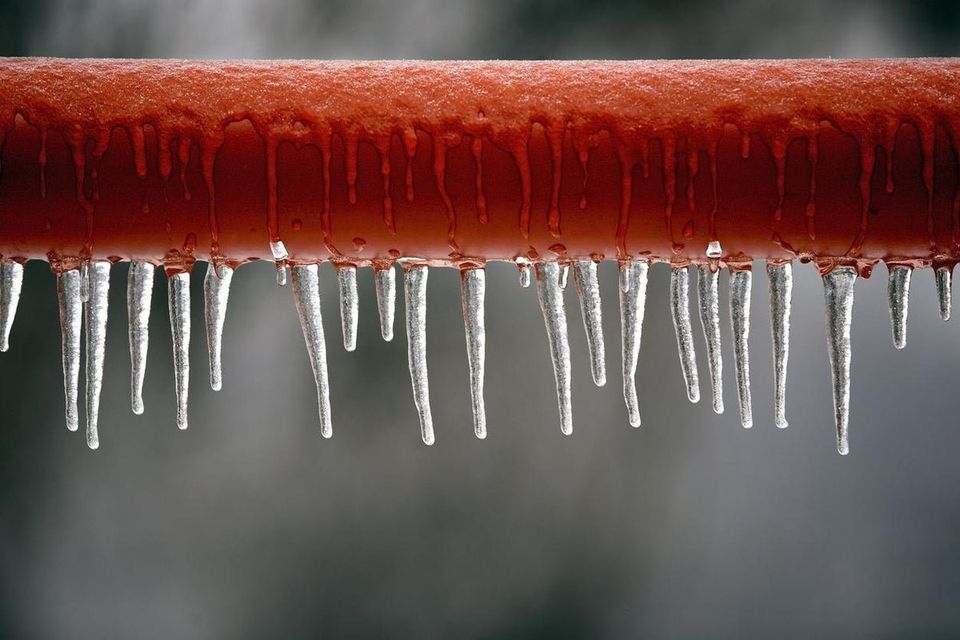Avoiding Frozen Plumbing in Cold Weather: Critical Strategies
Avoiding Frozen Plumbing in Cold Weather: Critical Strategies
Blog Article
Just how do you actually feel on the subject of Prevent Frozen Pipes ?
:strip_icc()/snow-outdoor-faucet-pipes-4af65d1e5e904fb1aa7bf74071fe5d89.jpg)
Winter can ruin your pipes, specifically by freezing pipes. Right here's how to prevent it from happening and what to do if it does.
Introduction
As temperature levels decrease, the danger of frozen pipelines rises, possibly causing expensive repairs and water damages. Comprehending how to stop frozen pipes is critical for house owners in cold climates.
Avoidance Tips
Protecting at risk pipes
Cover pipes in insulation sleeves or make use of heat tape to secure them from freezing temperatures. Concentrate on pipelines in unheated or external areas of the home.
Home heating strategies
Keep interior rooms properly warmed, specifically areas with plumbing. Open up cabinet doors to enable cozy air to flow around pipelines under sinks.
How to identify frozen pipes
Try to find reduced water circulation from taps, unusual odors or noises from pipes, and visible frost on exposed pipes.
Long-Term Solutions
Structural adjustments
Consider rerouting pipelines far from outside wall surfaces or unheated locations. Include additional insulation to attic rooms, cellars, and crawl spaces.
Updating insulation
Buy premium insulation for pipelines, attic rooms, and wall surfaces. Proper insulation assists maintain regular temperature levels and minimizes the risk of icy pipes.
Protecting Exterior Plumbing
Yard hoses and outdoor taps
Separate and drain yard hoses before winter months. Install frost-proof faucets or cover exterior faucets with insulated caps.
Recognizing Icy Pipes
What creates pipelines to freeze?
Pipes freeze when revealed to temperature levels below 32 ° F (0 ° C) for extended periods. As water inside the pipes freezes, it broadens, taxing the pipeline walls and potentially triggering them to rupture.
Dangers and damages
Frozen pipes can result in water system disturbances, property damages, and pricey fixings. Burst pipes can flooding homes and trigger substantial structural damage.
Signs of Frozen Piping
Recognizing frozen pipes early can stop them from rupturing.
What to Do If Your Pipes Freeze
Immediate activities to take
If you suspect icy pipes, keep taps open to relieve stress as the ice melts. Make use of a hairdryer or towels soaked in warm water to thaw pipes slowly.
Final thought
Stopping frozen pipelines requires positive measures and fast responses. By comprehending the reasons, indications, and safety nets, property owners can secure their plumbing during cold weather.
6 Proven Ways to Prevent Frozen Pipes and Protect Your Home
Disconnect and Drain Garden Hoses
Before winter arrives, start by disconnecting your garden hoses and draining any remaining water. Close the shut-off valves that supply outdoor hose bibs and leave the outdoor faucet open to allow any residual water to drain. For extra protection, consider using faucet covers throughout the colder months. It’s also important to drain water from any sprinkler supply lines following the manufacturer’s directions.
Insulate Exposed Pipes
Insulating your pipes is an effective way to prevent freezing. Pipe insulation is readily available at home improvement stores and is relatively inexpensive. Pay close attention to pipes in unheated areas such as the attic, basement, crawl spaces, or garage. Apply foam insulation generously to create a buffer against the cold. You can also wrap your pipes in heat tape or thermostat-controlled heat cables for added warmth.
Seal Air Leaks
Inspect your home for any cracks or openings that could let in cold air. Seal any holes around the piping in interior or exterior walls, as well as the sill plates where your home rests on its foundation. Additionally, make sure to keep your garage door closed unless you’re entering or exiting. Leaving it open creates a significant air leak that can lead to frozen pipes.
Allow Warm Air Circulation
During cold snaps, it’s essential to allow warm air to circulate evenly throughout your home. Leave interior doors ajar to promote better airflow. Open kitchen and bathroom cabinets to help distribute heat consistently around the rooms. If you have small children or pets, be sure to remove any household chemicals or potentially harmful cleaners from open cabinets for safety.
Let Faucets Drip
A small trickle of water can make a big difference in preventing ice formation inside your pipes. When temperatures drop significantly, start a drip of water from all faucets served by exposed pipes. This continuous flow helps prevent the water from freezing. Additionally, running a few faucets slightly can relieve pressure inside the pipes, reducing the chances of a rupture if the water inside does freeze.
https://choateshvac.com/6-proven-ways-to-prevent-frozen-pipes-and-protect-your-home/

As a devoted reader about 6 Ways to Prevent Frozen Pipes, I figured sharing that excerpt was worth the trouble. Don't hesitate to take the opportunity to distribute this blog posting if you appreciated it. We enjoy your readership.
Contact Us Today Report this page